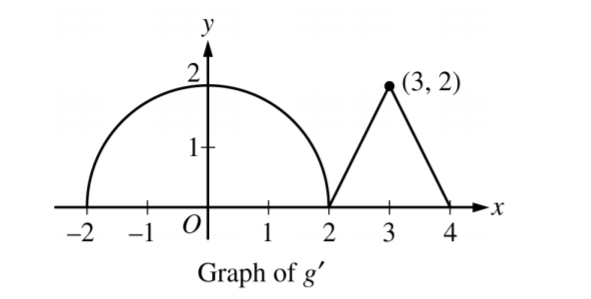Question
Let f be a function such that f(−x) = −f(x) for all x. If \(\int ^{2}_{0}f(x)dx=5\), then \(\int ^{2}_{-2}(f(x)+6)dx\)=
A 6
B 16
C 24
D 34
Answer/Explanation
Question

The graph of g¢, the first derivative of the function g, consists of a semicircle of radius 2 and two line segments, as shown in the figure above. If g(0) = 1, what is g (3)?
A π +1
B π +2
C 2π +1
D 2π +2
Answer/Explanation
Question
\(\int_{2}^{+\infty }\frac{dx}{x^2} \) is
(A)\( \frac{1}{2}\) (B) ln 2 (C) 1 (D) 2 (E) nonexistent
Answer/Explanation
Question
If \(\int_{1}^{4}f(x)dx=6\),what is the value of \(\int_{1}^{4}f(5-x)dx=6\) dx?
(A) 6 (B) 3 (C) 0 (D) −1 (E) −6
Answer/Explanation
Ans:A

